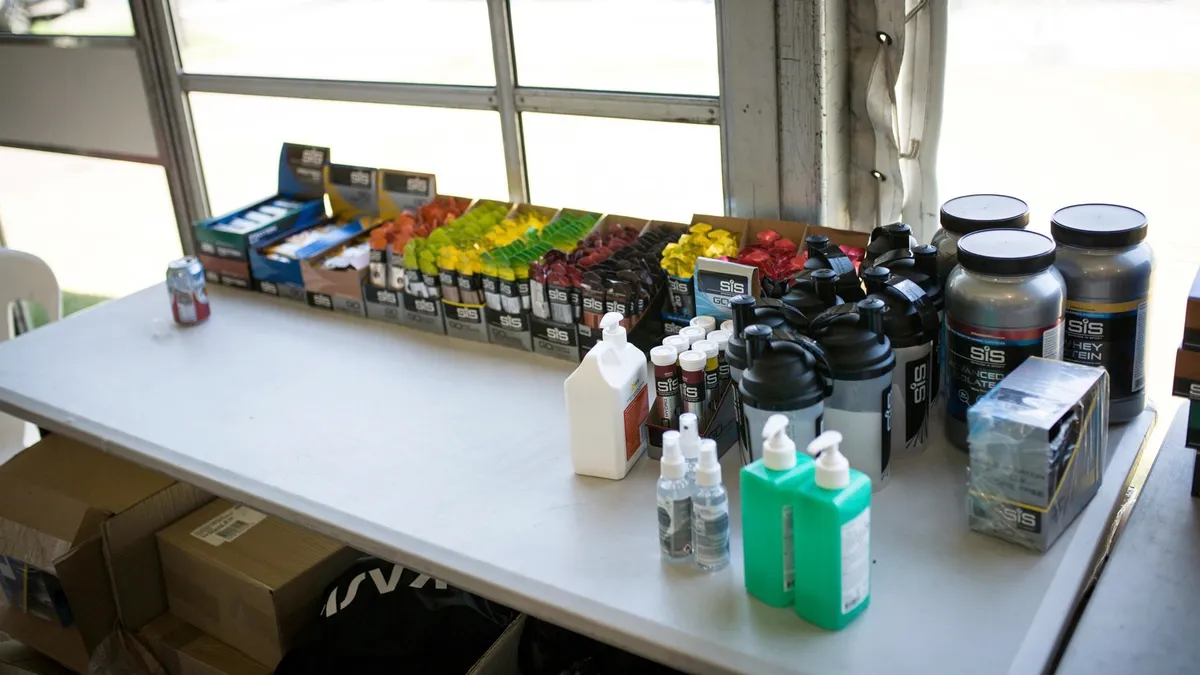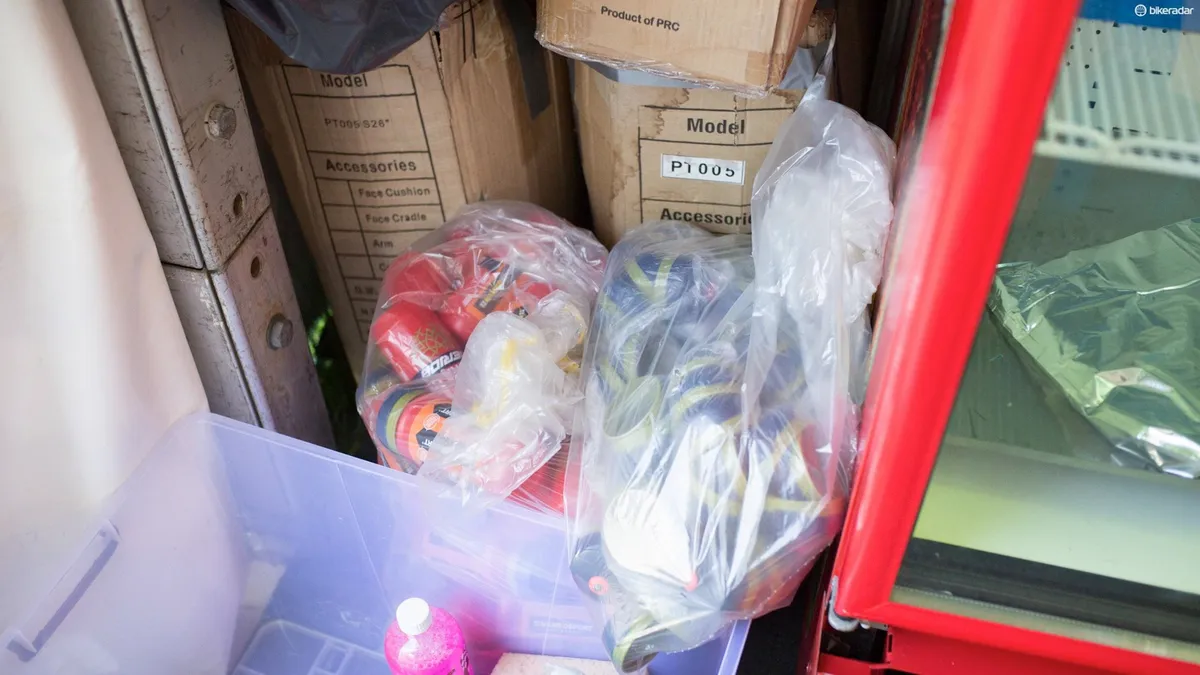Pro bike racing requires an awful lot of equipment. From spare bikes to spare wheels, to chainrings, tires, helmets, clothing, bar tape, and bottles, riders need it all on hand, and that’s not factoring in what the mechanics need to maintain this equipment, nor the soigneurs, sports directors and other staff.
- Tech gallery: Tour Down Under
- Trickle-down tech benefits from Shimano S-Phyre World Tour kit
- Gold wheels, custom SRMs, homemade shoes and more spotted at Tour Down Under 2017
With the majority of the racing calendar taking place in Europe, teams can base their Service Course somewhere on the continent, and drive a truck between the races, with everything they could ever need inside.
However with the UCI calendar including more races in Australia, the Middle East, and Asia every year, so-called 'fly-away racing' is a growing logistical challenge and something the teams have to plan for and execute properly for their riders to perform well.
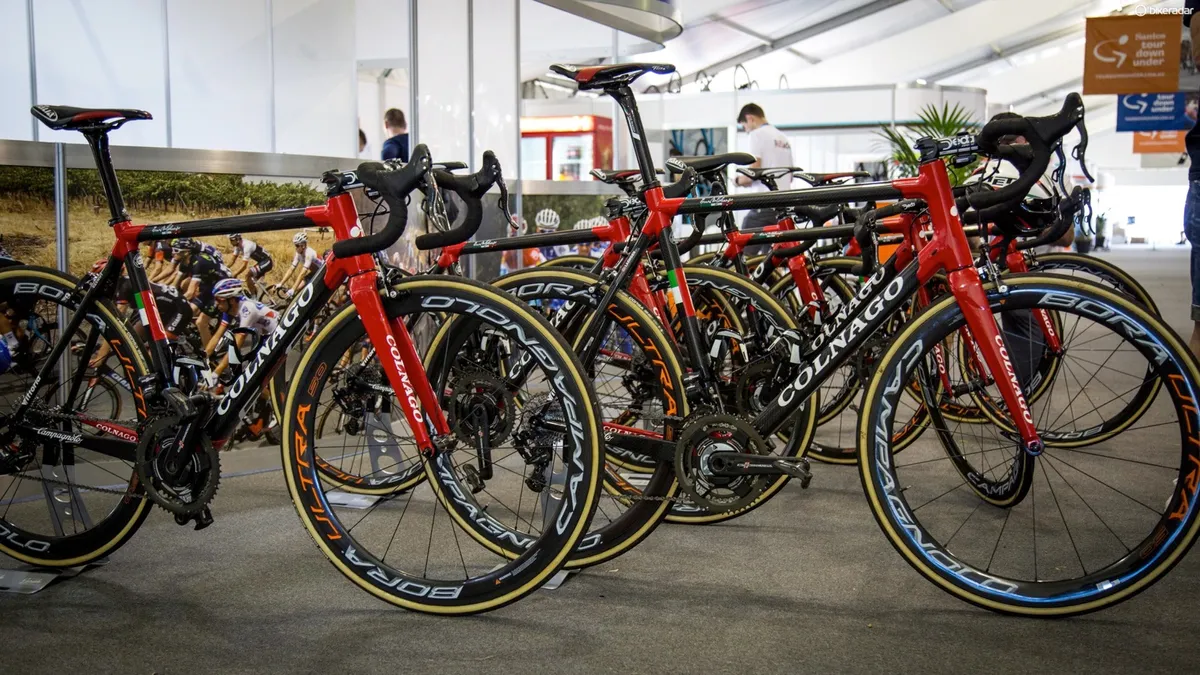
With baggage restrictions, weight limits and the vast distance this gear needs to be moved, it creates a complex problem for the teams.
“We have a big scale in our Service Course in Europe, and we had to pack things up and weigh it all out before we left for Australia," Henk van Lijsdonk, mechanic at Dimension Data tells us. "We were able to bring 430kg total, and we came within 500g of the limit. Those last few grams were pretty stressful.”
'You're bringing how much?'
While there is nothing outside of Europe that compares to the three-week Grand Tour (yet), a six-day stage race like the Tour Down Under still requires a heck of a lot of gear. Geoff Brown, head mechanic at Cannondale Drapac, estimates that they bring about 60 per cent of the gear they'd need for a similar race in Europe.
Noel Dejonckheere, BMC Racing’s European operations manager, offered a similar sentiment: “The main difference is that we bring less spare bikes and spare equipment. The core materials stay relatively the same but we don’t have the option of having spares for everything. We also bring fewer types of wheels, whereas in Europe we have basically everything on hand.”
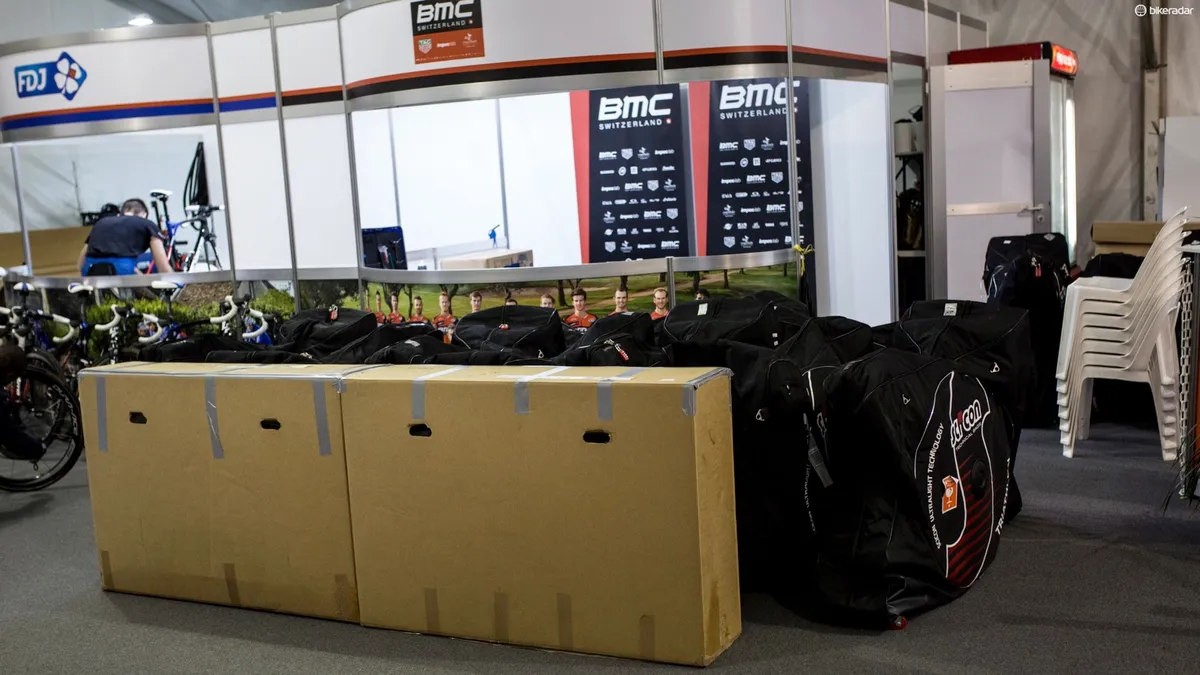
“With the trucks we travel with at European races, we also have things in there that we don’t use but are suited to time trials and big mountain stages. So everything we bring to the Tour Down Under is needed and is relevant,” he continued.
“The biggest problems come when we have a time trial as it adds a whole new dimension to the race. If we bring a TT bike for everyone then combined with the normal race and spare bikes we could be looking at 30 to 35 bikes to transport, and this is too much for a race like the Tour Down Under,” Dejonckheere added.
Luckily for the teams there is no time trial stage at the Tour Down Under, though some outfits like BMC Racing also have to support riders in the Australian time trial championships, like the 2017 winner Rohan Dennis.
Excess baggage
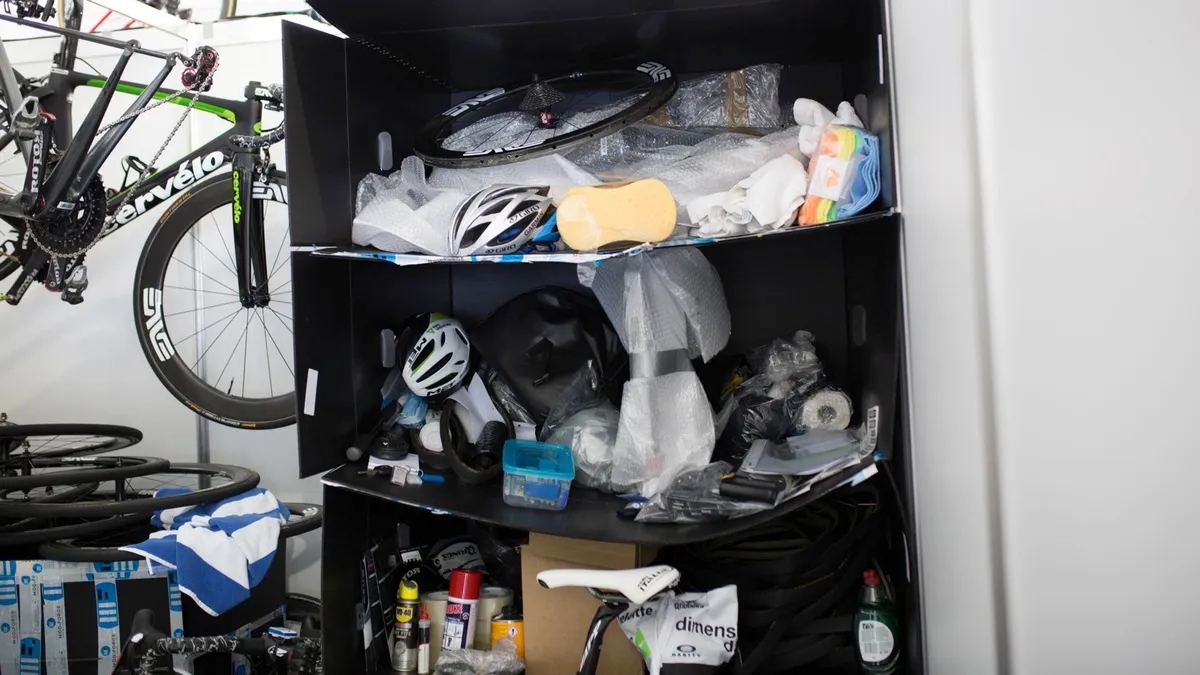
For a race like the Tour Down Under, the race organises the plane tickets for the riders, mechanics and other staff, and they bring much of their own kit as luggage – but this creates another problem.
“We had to keep it under 30kg per box because you can’t do more,” said van Lijsdonk from Dimension Data. “We would pack two bikes and a bunch of wheels in one box. From there we were packing bottles in between the bags and stuffing kits in, filling everything up. They weigh them at the airport, you get a max of 30kg, and they won’t take it if it’s more than that.”
So with all of this weight, how much does that actually bring? It varies from team to team, but Fred Bassy from Cannondale Drapac told BikeRadar they have two bikes, two saddles, two seatposts, and three groupsets per rider, and 20 chains, 20 chainrings, and 24 sets of wheels divided among various depths. It’s worth noting that Cannondale Drapac uses the Ceramic Speed UFO Race chains, which feature a low-friction coating that only lasts for about 320km / 200miles. Over at BMC Racing, mechanic Aaron Fairly told us they only brought eight extra chains in total.
For a team like Dimension Data, which is sponsored by Rotor, it’s even more complicated, “With Rotor we have noQ and Q chainrings, so we have three guys with Q-rings and we bring 54t to 34t [chainrings] and everything in between and same for the noQ’s. Then I’ve got a few 55 and 56’s which we will take down to Melbourne for the Cadel Evans Great Ocean Road Race. In total I think we have between 40 and 45 chainrings with us here in Australia,” van Lijsdonk said.

There are also race kits, podium kits, standard helmets, aero helmets, riding shoes, podium shoes… The list goes on and on.
Suncream and nutritional needs
It’s not just the bikes and spares parts that fill out the riders' and staffers' luggage – don't forget these guys are out in the sun riding for six hours a day. Veit Hammer, Head of Marketing and PR for Team Dimension Data, explained to us that the team is sponsored by sunscreen brand SolRX, and all of that had to be brought with them as well.
The race organizers do their best to help out by providing bottles, as well as offering products from race partners like Powerade, but even though the teams are far from home, they’re still bound by sponsored agreements.
“The Santos Tour Down Under provides water bottles and if one of our team partners like PowerBar is a race sponsor then this helps us out. But generally the race sponsors clash with our team partners and in this case we can’t accept their products for use during the race,” Dejonckheere explained.
Camaraderie in the pits

Just like the riders, the mechanics have their routine perfected as well, with their own separate ‘fly-away’ tool boxes.
"I have a tool box I take overseas and a bigger one with some more special tools for the normal races. But this is mainly what I need for here," van Lijsdonk said as he opened his tool box. “This one flies well and it’s not always 100-percent, so my older tools end up in here when I get new ones.”
It doesn’t always go according to plan though, as Fairly relates a story from when he was working for the USA Cycling Track program. “We were flying to a track race in Pakistan and my tool box got lost. I was there for about half of the time without a tool box. Basically, I had to keep asking the other mechanics to borrow tools,” he said. “They also lost my suitcase so I had to wear the same clothes for that whole time as well.”

For the most part, while each team varies quite a bit in how much they bring, they have a well-rehearsed system, and if someone gets into trouble, there is plenty of camaraderie in the pits.
“It’s always better to bring more material than less materials, I don’t think we have ever run out of anything, at least not at any of the traveling races I have been to,” Fairly said. “If there is anything that you run out of, you know everybody is in the same situation, we would ask one of the other teams – everyone is happy to help.”

